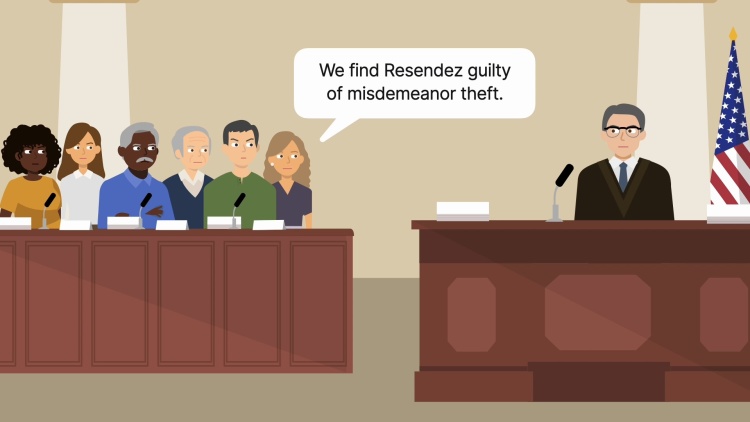Wal-Mart Stores, Inc. v. Resendez
Texas Supreme Court
962 S.W.2d 539 (1998)
- Written by Craig Conway, LLM
Facts
During a lunch break, Lucia Resendez (plaintiff) went shopping at a Wal-Mart store. As she browsed the aisles, Resendez ate from a bag of peanuts marked with a Wal-Mart price sticker. A Wal-Mart security guard, Raul Salinas, observed Resendez put the empty peanut bag underneath a rose bush and then proceed to a checkout station where Resendez purchased some items. After leaving the store, Salinas confronted Resendez in the store’s parking lot and accused her of eating the peanuts without paying for the bag. Resendez agreed to accompany Salinas back into the store where they waited approximately 15 minutes for a police officer to arrive. The police officer arrested Resendez for misdemeanor theft and transported her to jail. Resendez posted bail and left the jail approximately one hour later. Resendez’s conviction for theft was later overturned due to a defect in the indictment. Resendez then filed a civil action against Wal-Mart Stores, Inc. (Wal-Mart) (defendant) for malicious prosecution, false imprisonment, and intentional infliction of emotional distress (IIED). At a jury trial, Wal-Mart raised the defense of the shopkeeper’s privilege. Subsequently, the jury found in favor of Resendez and awarded damages. Wal-Mart appealed. The court of appeals affirmed the trial court’s judgment. The Supreme Court of Texas granted certiorari to review.
Rule of Law
Issue
Holding and Reasoning (Per curiam)
What to do next…
Here's why 899,000 law students have relied on our case briefs:
- Written by law professors and practitioners, not other law students. 47,000 briefs, keyed to 994 casebooks. Top-notch customer support.
- The right amount of information, includes the facts, issues, rule of law, holding and reasoning, and any concurrences and dissents.
- Access in your classes, works on your mobile and tablet. Massive library of related video lessons and high quality multiple-choice questions.
- Easy to use, uniform format for every case brief. Written in plain English, not in legalese. Our briefs summarize and simplify; they don’t just repeat the court’s language.






